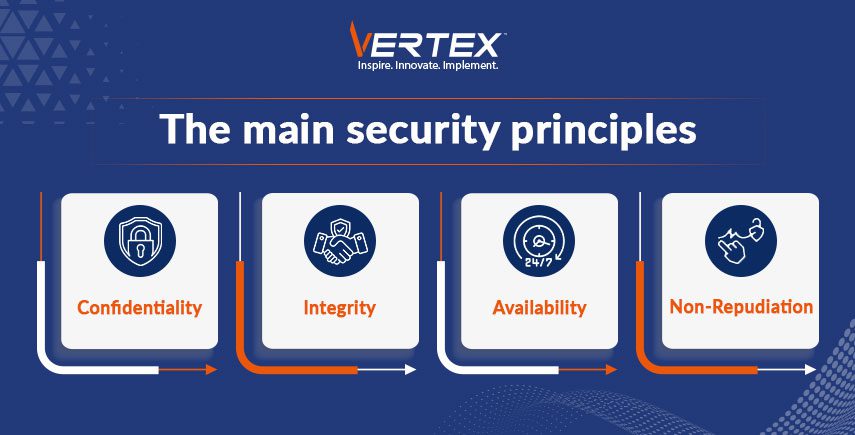
Srinivasarao Vizinigiri
August 22, 2024Mulesoft Security: Ensuring Your Integrations Are Safe and Secure
Regarding API security, companies are more worried than they have ever been.
Over 58% of cybersecurity experts cited data exfiltration as their primary concern in 2022; by 2024, 43% said data security was their most formidable obstacle. Data protection is non-negotiable, with risks like breaches and cloud security on their heels.
Now, enter MuleSoft, a revolution in API security. MuleSoft provides the tools to address these issues directly, and your company is shielded from today’s most urgent security risks.
In this blog, you will learn about Mulesoft in detail, along with its many aspects of it and future aspects as well. So, let’s begin.
What is MuleSoft Security?
First, let us define MuleSoft security precisely: what is it? If you deal with MuleSoft, you are likely aware it is a potent tool for creating application networks linking data, devices, and apps.
But great power comes with considerable responsibility—especially about maintaining those ties.
MuleSoft security encompasses a spectrum of techniques, methods, and capabilities to safeguard data integrity, confidentiality, and availability as it moves across various linked platforms.
MuleSoft offers robust security methods to protect your integrations, from safeguarding APIs to guaranteeing safe data flow.
But why is security such a significant concern in MuleSoft integrations?
Let’s explore it next.
Why Security Matters in Mulesoft Integrations?
Why, then, is security so important when using MuleSoft?
MuleSoft is all about linking several systems, applications, and data sources. Sensitive data is thus continually being sent over several networks and is a perfect target for cyberattacks.
Should your integrations be inadequate, you risk allowing possible data leaks, illegal access, and even compliance problems. Protecting such data is non-negotiable in today’s digital terrain.
Knowing the value of security now, let’s examine how MuleSoft handles API security mainly.
How does MuleSoft handle API security?
MuleSoft provides a robust suite of capabilities via its API security features—part of the Mule Anypoint Platform—for API security.
Given the popularity of the platform among companies and developers, a significant focus from the start has been on being able to verify API security straight inside MuleSoft.
But just what does Mule API security mean?
Mule API security is a whole suite of steps meant to guard APIs from many of the typical vulnerabilities fraudsters usually target. These cover fundamental security policies, including:
- Client ID enforcement
- SLA-based Rate Limiting
- SLA-based Throttling
- Mule OAuth 2.0 access token enforcement
- External access token enforcement
- LDAP Authentication policy
- Cross-origin resource sharing (CORS)
- HTTP Basic authentication
- IP blacklist and whitelist
- JSON and XML threat Protection
- Spike Control
- Header Injection and Header removal
- Tokenization and De-Tokenization
- JSON Web Token (JWT) validation policy
With security elements, including Denial of Service (DoS) protection, IP whitelists, HTTP restrictions, and Web Application Firewalls, MuleSoft also lets you build an Edge Gateway further to regulate traffic in and out of your API.
But underneath all MuleSoft works are fundamental security ideas that direct all it does. Let us then investigate those next.
The main security principles
Several fundamental ideas apply to protecting your MuleSoft integrations. Knowing them will enable you to value MuleSoft’s steps and how they fully fit your security requirements.

- Confidentiality
It is the idea that sensitive material is only viewable to authorized persons. MuleSoft’s application of access limits and encryption directly advances this idea.
- Integrity
Data integrity is the accuracy of the data moving through your integrations, free from manipulation. MuleSoft guarantees data stays unbroken via checksums, digital signatures, and other techniques.
- Availability
This idea is about ensuring the technologies and data you require are accessible when you most need them. Robust infrastructure and failover features of MuleSoft are meant to keep your services running even in the face of technical problems or threats.
- Non-Repudiation
Non-repudiation is the inability of the sender to refute a transaction or message later on. MuleSoft guarantees a clear record of actions using logging and digital signatures, therefore attaining this.
Following these guidelines helps MuleSoft make sure your integrations are dependable, safe, and secure.
Also, read Why Is Mulesoft the future of integration platforms?

What then stands ahead for MuleSoft security?
The tools and techniques we employ to safeguard our systems change along with technology. In the realm of MuleSoft security, below are some tendencies to be alert to:
- Real-time integration
MuleSoft will lead real-time data integration, enabling companies to make more intelligent decisions.
- AI & Machine Learning
Expect AI-powered automation in API administration, providing predictive analytics and advanced threat detection from machine learning.
- IoT Integration
MuleSoft will improve its platform to handle and analyze IoT data in real-time as IoT develops, providing companies with insightful information.
- Security Focus
Rising security issues will probably cause MuleSoft to enhance its security features—including improved data protection and API access limits.
- Driving Innovation
MuleSoft will always be a significant player in digital transformation since it will enable companies to innovate and keep ahead in a constantly shifting terrain.
Wrapping Up
MuleSoft security is a fundamental component of guaranteeing the integrity and safety of your integrations.
Its ongoing innovation depends on you keeping up with future developments to support a strong security posture.
Following the ideas and techniques covered in this blog will help you to keep your data safe and secure your integrations.
Recent Blogs

19 May, 2025

19 May, 2025

12 May, 2025

5 May, 2025

28 April, 2025

21 April, 2025

14 April, 2025

7 April, 2025
Recent News

2 February, 2025

14 November, 2024

4 November, 2024

1 August, 2024

6 March, 2024

28 February, 2024

12 June, 2023



